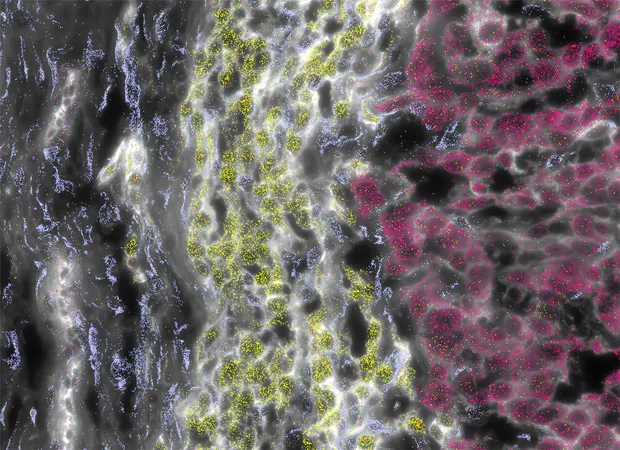
Breakthrough in RARE Liver Cancer Treatment: Unique Characteristics of Fibrolamellar Carcinoma Unveiled
2025-01-18
Author: Mei
Fibrolamellar hepatocellular carcinoma (FLC) is a rare and aggressive form of liver cancer that primarily affects children, adolescents, and young adults, presenting a significant challenge in early diagnosis.
Due to its elusive symptoms, FLC is often overlooked or misdiagnosed until it reaches an advanced and dangerous stage. Alarmingly, standard drug therapies for more common liver cancers can not only be ineffective for FLC patients but may also pose additional risks.
Uncovering the Genetic Mystery
However, new groundbreaking research from Rockefeller University is shedding light on this uniquely devastating disease. The lab, led by the esteemed Sanford M. Simon and featuring key work from senior researcher David Requena, has identified a distinct transcriptomic "signature" of fibrolamellar carcinoma. This pioneering discovery lays the groundwork for better diagnostic and treatment approaches.
Back in 2014, Simon’s team made a pivotal discovery regarding FLC's genetic origins. They found that the cancer results from a fusion between two genes, DNAJB1 and PRKACA, stemming from a deletion in chromosome 19. Their recent findings indicate that the severity of FLC is linked to an excess of PRKACA, a pivotal protein that, when unregulated, can lead to cellular chaos and tumor progression.
In their latest study, which is the largest of its kind involving over 1,400 tumor samples, researchers sought to differentiate FLC from other liver cancer types. They executed an extensive analysis to map the transcriptomic signature unique to FLC tumors, identifying 301 genes with distinct expressions. Notably, 35 of these genes are exclusively elevated in FLC, opening the door for potential diagnostic applications.
Moreover, the study revealed that similar transcriptomic changes could occur in related cancers, suggesting a broader genetic landscape underlying these malignancies.
The Hidden Threat of Residual Disease
In a surprising twist, researchers discovered that residual cancer cells could remain unnoticed in tissue surrounding the primary tumor. This revelation highlights the critical need for thorough examinations of tissue margins, as incomplete surgeries could result in new cancerous growths.
A Ray of Hope: Clinical Trials and Future Directions
Armed with these insights, Simon’s research team has launched a clinical trial testing a promising combination therapy involving DT2216 and irinotecan, specifically tailored for FLC. Supported by reputable organizations such as the Children's Oncology Group and the NIH’s Pediatric Early Phase Clinical Trials Network, this trial aims to assess the efficacy of these drugs in combating the life-threatening effects of FLC.
Further supporting their mission, Simon's lab is collaborating in the KOODAC initiative, which seeks to create innovative therapies targeting the oncogenic fusions responsible for FLC and similar cancers. Simon aims to share these groundbreaking findings at the upcoming American Association for Cancer Research meeting, with hopes of not just advancing FLC treatment but also setting a precedent for tackling other challenging cancers like Ewing sarcoma and neuroblastoma.
With ten years of dedicated research culminating in these promising breakthroughs, the team remains hopeful that these insights can lead to improved diagnostics and therapies, offering newfound hope to patients battling rare cancers. As research continues, the fight against fibrolamellar carcinoma is steadily becoming more formidable. Stay tuned for more exciting updates on this potentially life-saving advancement!




 Brasil (PT)
Brasil (PT)
 Canada (EN)
Canada (EN)
 Chile (ES)
Chile (ES)
 Česko (CS)
Česko (CS)
 대한민국 (KO)
대한민국 (KO)
 España (ES)
España (ES)
 France (FR)
France (FR)
 Hong Kong (EN)
Hong Kong (EN)
 Italia (IT)
Italia (IT)
 日本 (JA)
日本 (JA)
 Magyarország (HU)
Magyarország (HU)
 Norge (NO)
Norge (NO)
 Polska (PL)
Polska (PL)
 Schweiz (DE)
Schweiz (DE)
 Singapore (EN)
Singapore (EN)
 Sverige (SV)
Sverige (SV)
 Suomi (FI)
Suomi (FI)
 Türkiye (TR)
Türkiye (TR)
 الإمارات العربية المتحدة (AR)
الإمارات العربية المتحدة (AR)